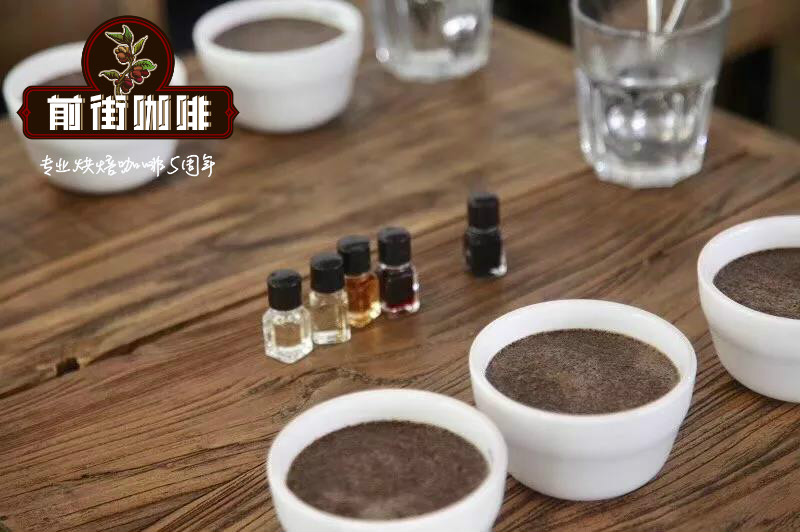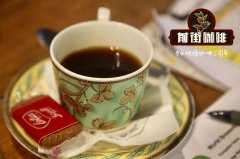Coffee from the KIAMBU region of Kenya has round beans, thick flesh and obvious fruit flavor.

Professional coffee knowledge exchange more coffee bean information please follow the coffee workshop (Wechat official account cafe_style)
Monteiro Manor, Amber District, Kenya, AA Class "SL28"
Product name Kenya AA Mtaro
National Kenya
Production area Kiambu
Graded AA (SC18+)
Producer Monteiro Manor
Treated washing-Kenyan style
Variety SL28,Ruiru11,Batian
1600 meters above sea level
Authentication Utz certification
GPS 1 degree 2 minutes 16 seconds south; 36 degrees 58 minutes 21 seconds east longitude (processing plant)
Kenya is located on the plateau of East Africa, and although it is close to Ethiopia, the native place of coffee, the mass production of coffee beans is more than a thousand years late. It began about a hundred years ago after the then British ruling class invested heavily to encircle large tracts of land and hired local aborigines to open up estates.
Located in Kiambu, about 40 kilometers northeast of Nairobi, Montalo Manor is a standard large Kenyan estate with an annual output of 260m tons (4350 bags) of raw beans. The industrial road in the manor is full of rows and neatly arranged coffee trees, which is very spectacular!
Because it is not easy to manage such a large manor, Monteiro Manor plans the whole estate into five A/B/C/D/E blocks, each of which is divided into three or six small blocks of about 10 hectares, with a total of 21 blocks. The manor manager planted different varieties in each block, including SL28, SL34, French missionaries, Ruiru11, Batian..., and sprayed / fertilized / pruned / harvested according to the plan. And so on, which is also a feature of many large manors in Kenya: perfect planning, uniform operation, attaching importance to the introduction of agricultural science and technology, and good management. The standard of the product has been maintained quite smoothly!
Because of its planned and rigorous work, Montalo Manor has also been certified as Utz Coffee.
The manor has two harvest seasons each year, April and October. After harvest, all berries are sent to the manor's own washing plant. Monteiro's own treatment plant uses the standard Kenyan washing method: after peeling the berries, after 24 hours of dry fermentation, washing and using the buoyancy of the seeds, the heaviest P1 and P2 are soaked in water for 72 hours, and then dried into shell beans. Interestingly, what is dry is not sent directly to the scaffolding sunburn, but first to the ventilated house using the chimney effect that uses the roof to absorb sunlight and heat, and the warm natural hot air is slowly passed through the moist shell beans laid on the drying bed in the house. the warm air of pure renewable energy is pre-dried to a certain extent, and then sent to the African bedstead with limited space. The utilization efficiency of the whole process space can be the highest, at the same time, it does not consume energy and can achieve the highest quality of raw beans!
When the manor produces washed shelled beans, it will be handed over to the drying plant of the NCE bidding agent for shelling, screening and sorting. Wait for the procedure, and then divide it into NCE according to the standard specification of AA/AB/C/PB/TT/T. According to different grades, AA is the grade of Netlist 18, with large, full and heavy particles, which belongs to high-grade products. The estate actually produces AB/C/PB and even TT/T/E. And other specifications with smaller particles or lighter specific gravity. In the operating system of NCE, each harvest of coffee beans in the manor is carried out in a "micro-batch independent" way. That is, these raw beans will not be mixed with the raw beans of other producers before the NCE auction, but each batch of coffee on the estate will be processed and stored independently.
When the raw beans are processed, the NCE bidding agent commissioned by Monteiro Manor will take samples from different grades and micro-batches of raw beans and send them to the bidding center sample room of NCE for buyers to ask for samples. And assemble each batch of raw beans into a bidding catalogue and send them to the NCE bidding center for buyers to obtain, and then bid according to the schedule of the auction day. The Nairobi Coffee auction (NCE Auction), which is held every Tuesday, is the most important platform for mediating buyers and sellers. During the peak season, 600,800 batches of raw beans can often be traded on one bidding day, ranging from hundreds of kilograms to several tons.
This batch of AA raw beans are purchased in batches after Lianjie Coffee sent staff to visit the manor: with Kenya's unique thick acidity, obvious tone of purple grape fruit, guava, toffee, roasted almonds and other aromas, set off a round, sour and sweet feeling, as if to convey to you a clear image of a large manor in the Kiambu area.
Kenya AA Kiambu
Round beans, thick flesh, good heat permeability, high precision, French baking, rich and sweet taste, mellow thickness, good expansibility, aroma and sweetness are top grade. Kenyan coffee is one of the favorite products in the coffee industry because Kenyan coffee contains every feeling we want from a good cup of coffee. It has satisfactory aromas, balanced and delicious acidity, well-proportioned particles and excellent fruit flavors. It tastes so unique that there is almost no similar coffee.
END
Important Notice :
前街咖啡 FrontStreet Coffee has moved to new addredd:
FrontStreet Coffee Address: 315,Donghua East Road,GuangZhou
Tel:020 38364473
- Prev

African Kenya Meru coffee beans production area introduction Kenya coffee taste characteristics introduction
Professional coffee knowledge exchange More coffee bean information Please pay attention to coffee workshop (Weixin Official Accounts cafe_style) Kenya MERU (Meru) producing area small farmers planting coffee bean growing environment MERU (Meru) MERU: Most coffee in this area is planted by small farmers in Kenya foothills and Ny
- Next

The story of Kenyan KISII coffee bean flavor Kenyan Kisi coffee
Professional coffee knowledge exchange more coffee bean information please follow the coffee workshop (Wechat official account cafe_style) Kenya Kisi Story Kenya Keesi Cooperative Coffee Cooperative Network is famous. The system produces significant consistency in planting methods mills and auctions in a network of about 150000 growers most of whom are small-scale farmers. Ken
Related
- Detailed explanation of Jadeite planting Land in Panamanian Jadeite Manor introduction to the grading system of Jadeite competitive bidding, Red bid, Green bid and Rose Summer
- Story of Coffee planting in Brenka region of Costa Rica Stonehenge Manor anaerobic heavy honey treatment of flavor mouth
- What's on the barrel of Blue Mountain Coffee beans?
- Can American coffee also pull flowers? How to use hot American style to pull out a good-looking pattern?
- Can you make a cold extract with coffee beans? What is the right proportion for cold-extracted coffee formula?
- Indonesian PWN Gold Mandrine Coffee Origin Features Flavor How to Chong? Mandolin coffee is American.
- A brief introduction to the flavor characteristics of Brazilian yellow bourbon coffee beans
- What is the effect of different water quality on the flavor of cold-extracted coffee? What kind of water is best for brewing coffee?
- Why do you think of Rose Summer whenever you mention Panamanian coffee?
- Introduction to the characteristics of authentic blue mountain coffee bean producing areas? What is the CIB Coffee Authority in Jamaica?

